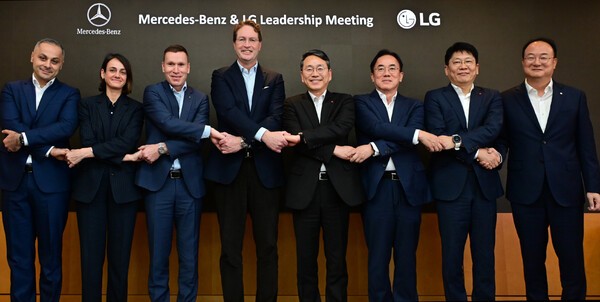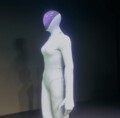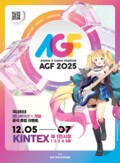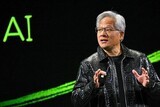How ‘One LG’ Signals a New Power Shift in the Global Automotive Supply Chain

Mercedes-Benz didn’t travel to Seoul merely for a courtesy visit.
By bringing together the CEOs of LG Electronics, LG Display, LG Energy Solution, and LG Innotek in one room, the German automaker signaled something far more consequential: LG is no longer just a component supplier but a strategic, integrated systems partner in the era where EVs and Software-Defined Vehicles (SDVs) reshape the industry.
For Mercedes-Benz, this meeting was an opportunity to evaluate—firsthand—how far LG has advanced its capabilities in mobility electronics, software, sensing, displays, and battery technologies. And more importantly, whether LG is ready to help define the architecture of the next generation of vehicles.
As the automotive industry rapidly shifts from internal combustion engines to EVs and now to SDVs, the demands on suppliers have fundamentally changed. Automakers no longer look for “the best individual parts.” They seek “system-level optimization.” Batteries, displays, sensors, and software must operate within a unified computing architecture. The companies that will matter most are not those excelling in one module but those capable of designing the holistic vehicle experience.
LG is positioning itself precisely there.
The “One LG” initiative reflects a strategic shift toward integrated collaboration across LG’s major mobility-related subsidiaries. While each LG company—LG Electronics (IVI, ADAS), LG Display (P-OLED), LG Energy Solution (EV batteries), LG Innotek (cameras, LiDAR, radar)—has built strong individual capabilities, they often appeared to move independently in the global market. Yet Mercedes-Benz’s vision of an EV-centric, digitalized, and highly automated manufacturing future demands tightly interlocked solutions. When LG’s four mobility arms share the same architectural language and approach OEMs as a single integrated technology partner, their collective impact grows exponentially. The latest meeting between LG and Mercedes-Benz was the first official demonstration of that cohesion.
So, what exactly was Mercedes-Benz looking to evaluate?
First, LG’s readiness for the SDV era.
As hardware becomes commoditized and automotive competitiveness increasingly hinges on software platforms and UX design, LG Electronics’ progress in webOS-based in-car systems, high-performance ADAS controllers, and SDV-enabling software stacks holds major significance. SDVs require continuous updates and service-based revenue models (SaaS), and LG’s software direction expands its role from “supplier” to “co-designer of the vehicle experience.”
Second, premium in-car experience.
Mercedes-Benz, particularly with its EQS and other high-end EV lines, has placed the digital cockpit at the center of its brand identity. LG Display’s P-OLED is the core technology enabling the iconic MBUX hyperscreen. It is not merely a display—it reshapes automotive UX and interior design. As vehicle experiences increasingly mimic smartphone-like interaction models, LG becomes an irreplaceable partner in Mercedes-Benz’s premium UX strategy.
Third, leadership in EV battery technology.
Mercedes-Benz has long relied on LG Energy Solution for consistent quality, stable production, and reliable global supply chains. Battery performance and safety heavily influence EV brand reputation, and LG stands among the few global suppliers capable of meeting the stringent requirements of premium OEMs. In the SDV era, where battery management systems (BMS) must integrate tightly with vehicle software, LG’s multi-subsidiary alignment becomes even more advantageous.
Fourth, advanced sensing for autonomous driving.
LG Innotek already leads globally in automotive camera modules and is advancing into LiDAR and radar technologies. These sensing capabilities are essential for Mercedes-Benz’s Level 3 and Level 4 autonomous driving ambitions. The meeting, therefore, served as a strategic evaluation of whether LG could be a complete EV–SDV–AV supply chain partner. The answer LG presented was close to an unequivocal “yes.”
The broader significance of this meeting lies in a profound shift in LG’s competitive identity.
Automotive competition used to revolve around “parts quality” and “supply stability.” Today, it is moving toward “platform competitiveness.” Tesla has built an in-house OS enabling seamless OTA updates; Apple is moving toward automotive ecosystems; Chinese OEMs are building their own integrated cockpit systems. Amid this shift, LG’s “One LG” strategy positions it as one of the few players capable of delivering a unified solution encompassing hardware, software, UX, energy systems, and sensing.
Mercedes-Benz’s visit to Korea is a highly symbolic first step in this transition.
Automakers select partners not for what they can supply today, but for the futures they can help build. LG has demonstrated it is one of the rare companies able to shape the architecture of next-generation vehicles alongside a top-tier OEM. If “One LG” evolves from a strategic framework into a full-fledged integrated global procurement model, Korea’s mobility electronics industry could be on the verge of a major quantum leap.
Biz Insights yoian@kakao.com

![[동학] 카카오톡 친구탭, 결국 12월 롤백… “격자형 피드는 선택 옵션으로”](https://cdn.kmjournal.net/news/thumbnail/custom/20251126/5517_10550_1119_1763853080_120.jpg)


![[테크 칼럼] 제미나이3, GPT-5.1을 넘다…AI는 이제 ‘일을 대신하는 시대’로 간다](https://cdn.kmjournal.net/news/thumbnail/custom/20251126/5457_10454_4847_1763621329_120.jpg)



![[낭만 테크 시대] AI 대항해 시대](https://cdn.kmjournal.net/news/thumbnail/custom/20251126/5603_10714_4334_1764121414_160.jpg)

